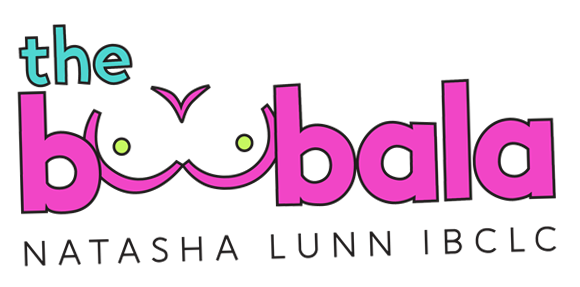Page Content
- How many calories do you burn every time you breastfeed?
- Why avoid strawberries while breastfeeding?
- Is 1500 calories a day enough for breastfeeding?
- How many calories a day should a breastfeeding mom eat?
- Is 1200 calories too low for breastfeeding?
- What foods make breastmilk more fatty?
- What is the fastest way to lose weight while breastfeeding?
- What do 1800 calories a day look like?
- What happens if you don’t eat enough calories while breastfeeding?
- How to lose 20 pounds in a month while breastfeeding?
Understanding Caloric Needs for Breastfeeding Moms
Breastfeeding is a remarkable process that not only nourishes infants but also significantly impacts a mother’s nutritional requirements. For women who are breastfeeding, the caloric intake must be adjusted to support both their health and the needs of their growing baby.
Caloric Increase for Breastfeeding
On average, breastfeeding mothers require an additional 450 to 500 calories per day compared to their pre-pregnancy caloric needs. This increase is essential to produce breast milk, which is a demanding process that burns a substantial number of calories. For many women, this translates to a total daily caloric intake ranging from 2,000 to 2,800 calories depending on various factors such as age, body mass index (BMI), and activity level.
Factors Influencing Caloric Needs
The exact number of calories a breastfeeding mother needs can vary widely. Factors such as the frequency of breastfeeding, the mother’s weight, and her overall metabolism play crucial roles. For instance, mothers who exclusively breastfeed may burn between 500 to 700 calories daily, which is akin to the energy expenditure of running several miles.
Moreover, the Dietary Guidelines for Americans suggest that women aged 19 to 50 should adjust their caloric intake based on their activity levels, which further complicates the calculation of daily needs.
Practical Implications
For a breastfeeding mother, ensuring adequate caloric intake is vital not only for milk production but also for maintaining her own health and energy levels. A well-balanced diet rich in nutrients is essential during this period. Foods high in protein, healthy fats, and complex carbohydrates can help meet these increased caloric needs while also providing the necessary vitamins and minerals for both mother and child.
In summary, breastfeeding mothers should aim for a caloric intake of approximately 2,500 calories per day, adjusting as necessary based on individual circumstances. This approach not only supports effective breastfeeding but also promotes the overall well-being of the mother during this critical time.
How many calories do you burn every time you breastfeed?
Breastfeeding can also help you manage or lose your postpartum weight. Moms burn about 500 extra calories a day while producing breast milk, which could lead to faster weight loss after birth. Although that doesn’t mean breastfeeding is a weight loss miracle, it can jumpstart the process.
Why avoid strawberries while breastfeeding?
A quart or more of orange juice or a diet heavy in seasonal fruits such as strawberries, melons or cherries have been associated with diarrhea and colicky symptoms in some infants. Foods containing many preservatives, additives or dyes have been associated with signs of discomfort in some babies.
Is 1500 calories a day enough for breastfeeding?
Milk Supply is abundant at around 1800-2200 calories per day. Consuming less than 1500-1800 calories per day may put your milk supply at risk, as may a sudden drop in caloric intake.
How many calories a day should a breastfeeding mom eat?
The exact amount depends on a number of factors, including your weight, how much you exercise, how your metabolism works, and how frequently you’re breastfeeding. But in general, most breastfeeding moms need 450 to 500 extra calories – that’s a total of around 2,500 calories per day.
Is 1200 calories too low for breastfeeding?
Eat at least 1500-1800 calories per day
Some mothers will require much more than this, but studies show that going below this number may put supply at risk.
What foods make breastmilk more fatty?
Incorporate More Healthy Fats into Your Diet
They are typically found in nuts, salmon, avocados, seeds, eggs, and olive oil. These types of fats are important for both you and your baby’s diet. What you eat, your baby will also eat in some form.
What is the fastest way to lose weight while breastfeeding?
If you wish to lose weight while breastfeeding, both diet and physical activity have a role. Physical activity or exercise is the safest way to lose weight during this time. Moderate calorie restriction (eating less) may be safe for some overweight women, but breastfeeding women should generally eat more calories.
What do 1800 calories a day look like?
Start with a nutrient-rich breakfast like smoothie and whole grain toast. Mid-morning snacks could include high fiber fruits like apple. Lunch could consist of lean protein like grilled chicken with veggies and carbs like cooked quinoa. A healthy dinner might involve veggies, lean protein and a hearty salad.
What happens if you don’t eat enough calories while breastfeeding?
Eating too few calories or too few nutrient-rich foods can negatively affect the quality of your breast milk and be detrimental to your health. While you’re breastfeeding, it’s more important than ever to eat a variety of healthy, nutritious foods and limit your intake of highly processed foods.
How to lose 20 pounds in a month while breastfeeding?
How to Lose 20 Pounds While Breast-feeding
- Breastfeed as often as the baby shows hunger cues and avoid giving the infant formula.
- Decrease your caloric intake to around 1,500 to 1,800 calories a day.
- Eat smaller, more frequent meals.
- Exercise for 30 minutes or more, on most days of the week.

